A Block 'A' is placed on a smooth horizontal surface and particle C is suspended with the help of light rod from point B of the block as shown. Now both the block A and the particle C are given velocity v0 towards left. The block A strikes a fixed wall and suddenly stops. Then, (The rod BC is free to rotate about B)
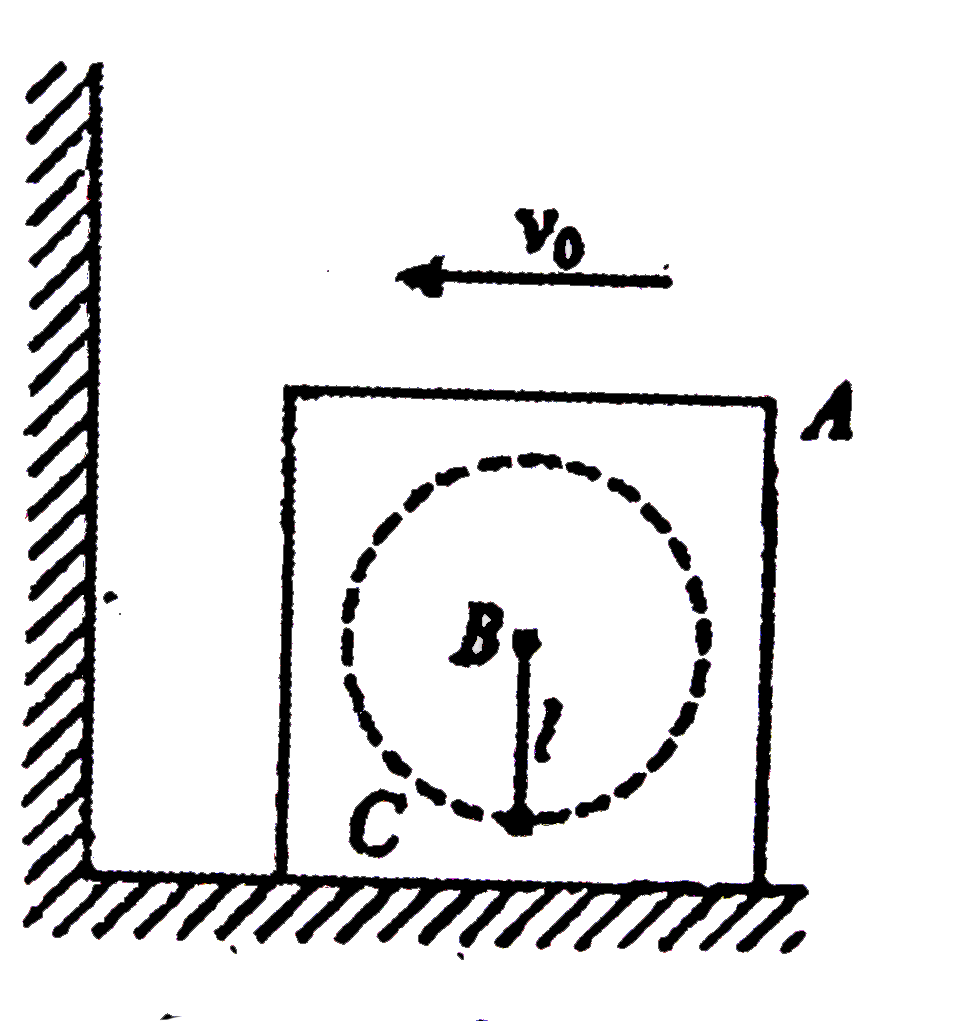
The smallest velocity v0 for which the particle C will swing in a full circle about the point B is √4gl
The smallest velocity v0 for which the particle C will swing in a full circle about the point B is √gl
Velocity of point C at the highest point of the circle (for the smallest value of v0) is zero
Velocity of point C at the highest point of the circle (for the smallest value of v0) is √gl
The correct Answer is:A, C
Step by step video, text & image solution for A Block 'A' is placed on a smooth horizontal surface and particle C is suspended with the help of light rod from point B of the block as shown. Now both the block A and the particle C are given velocity v_(0) towards left. The block A strikes a fixed wall and suddenly stops. Then, (The rod BC is free to rotate about B) by Physics experts to help you in doubts & scoring excellent marks in Class 11 exams.
Updated on:21/07/2023Topper's Solved these Questions
- WORK, ENERGY AND POWERBOOK - PHYSICS GALAXY - ASHISH ARORACHAPTER - WORK, ENERGY AND POWEREXERCISE - unsolvedMCQ
78 Videos
- WORK, ENERGY AND POWERBOOK - PHYSICS GALAXY - ASHISH ARORACHAPTER - WORK, ENERGY AND POWEREXERCISE - unsolved
1 Video
- WORK, ENERGY AND POWERBOOK - PHYSICS GALAXY - ASHISH ARORACHAPTER - WORK, ENERGY AND POWEREXERCISE - Discussion Question
31 Videos
- RIGID BODIES AND ROTATIONAL MOTIONBOOK - PHYSICS GALAXY - ASHISH ARORACHAPTER - RIGID BODIES AND ROTATIONAL MOTIONEXERCISE - Unsolved Numerical
63 Videos
Similar Questions
If A block is dragged on a smooth horizontal plane with the help of a light rope which moves with a velocity v as given in the figure .Then find the horizontal velocity of the block .
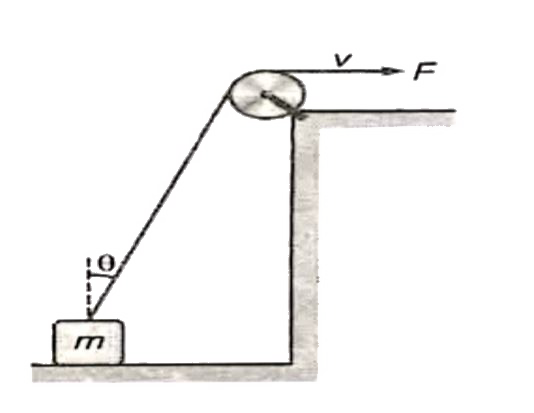
View SolutionA uniform block of mass M and dimensions as shown in the figure is placed on a rough horizontal surface and given a velocity V0 to the right. A is a point on the surface to the left of the block.
(a) Write the angular momentum of the block about point A just after it begins to move
(b) Due to friction the block stops. What happened to its angular momentum about point A? Which torque is responsible for change in angular momentum of the block?

View Solution
Knowledge Check
A block A of mass M is placed in contact with a fixed spring of length l and force constant k and free from a smooth wall at a distance l on the other side. If the block is given a velocity v as shown, the time taken by the block to strike on the wall will be
 Aπ√Mk+lvBπ√MkC2π√Mk+2lvDπ√Mk+2lv
Aπ√Mk+lvBπ√MkC2π√Mk+2lvDπ√Mk+2lvA block A of mass m is placed over a plank B of mass 2m. Plank B is placed over a smooth horizontal surface. The coefficient of friction between A and B is 12 block A is given a velocity v0 towards right. Accelration of B relative to A is
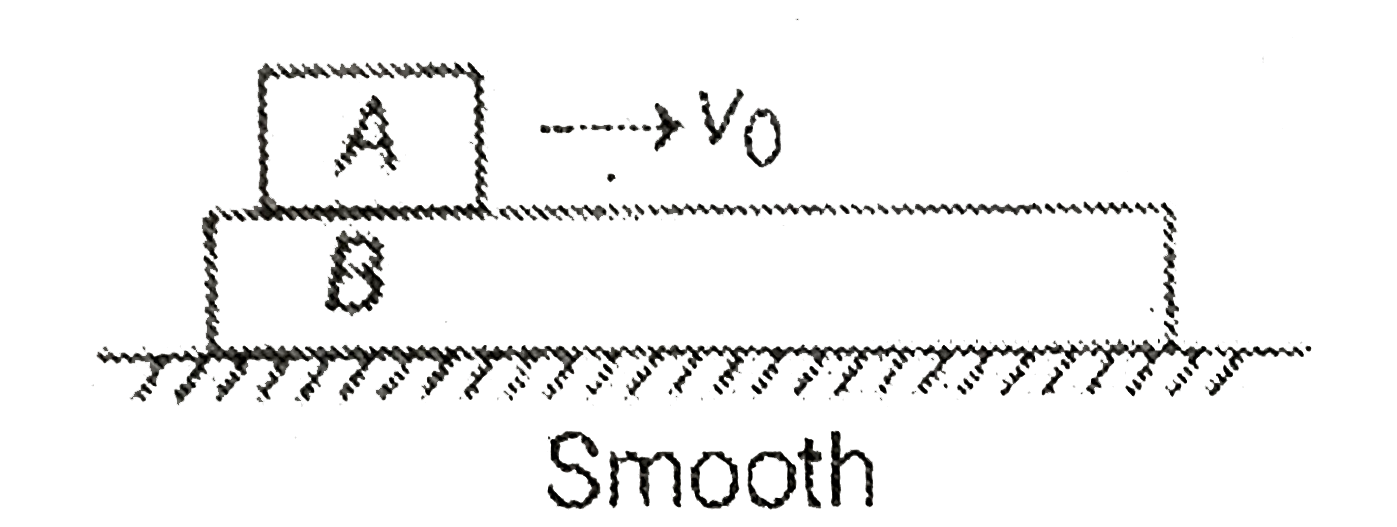 Ag2BzeroC3g4Dg4
Ag2BzeroC3g4Dg4A triangular block ABC of mass m and side 2a lies on a smooth horizontal plane is shown. There point masses of the m each strikes the block at A,B and C with speed as shown. After the collision the particle come to rest. Then
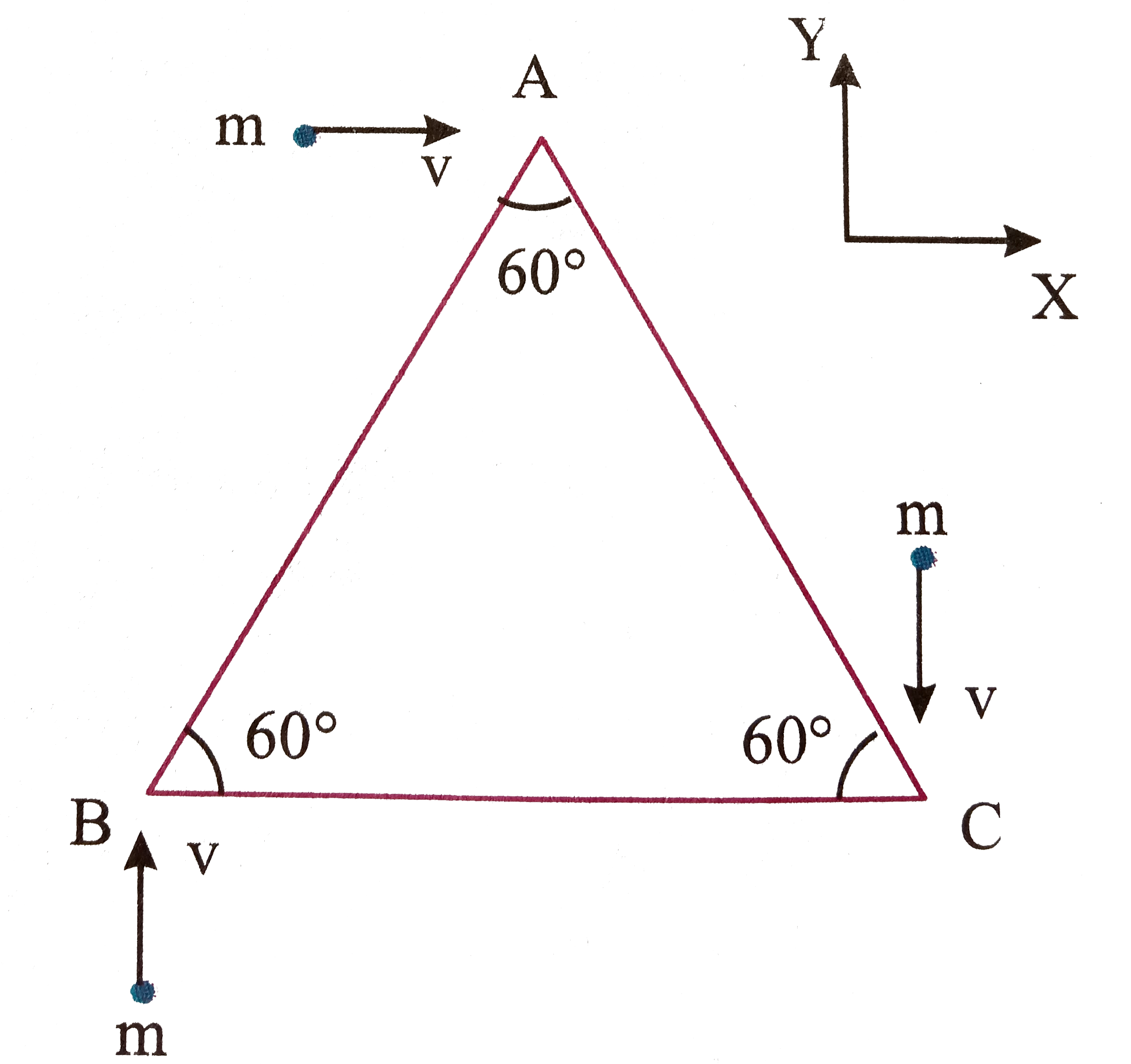 Athe centre of mass of ΔABC remains stationary after collisionBthe centre of mass of ΔABC moves with a velocityv along x-axis after collisionCthe triangular block rotates with an angular velocity ω=2√3mvaI about its centroid axis perpendicular to its planeDa point lying at a distance of (12√3ma) from centroid G on perpendicular bisector of BC is at rest just after collision
Athe centre of mass of ΔABC remains stationary after collisionBthe centre of mass of ΔABC moves with a velocityv along x-axis after collisionCthe triangular block rotates with an angular velocity ω=2√3mvaI about its centroid axis perpendicular to its planeDa point lying at a distance of (12√3ma) from centroid G on perpendicular bisector of BC is at rest just after collision
In the system shown, the block A is moving down eith velocity v1 and C is moving up with velocity v3. Express velocity of the block B in terms of velocities of the blocks a and C.
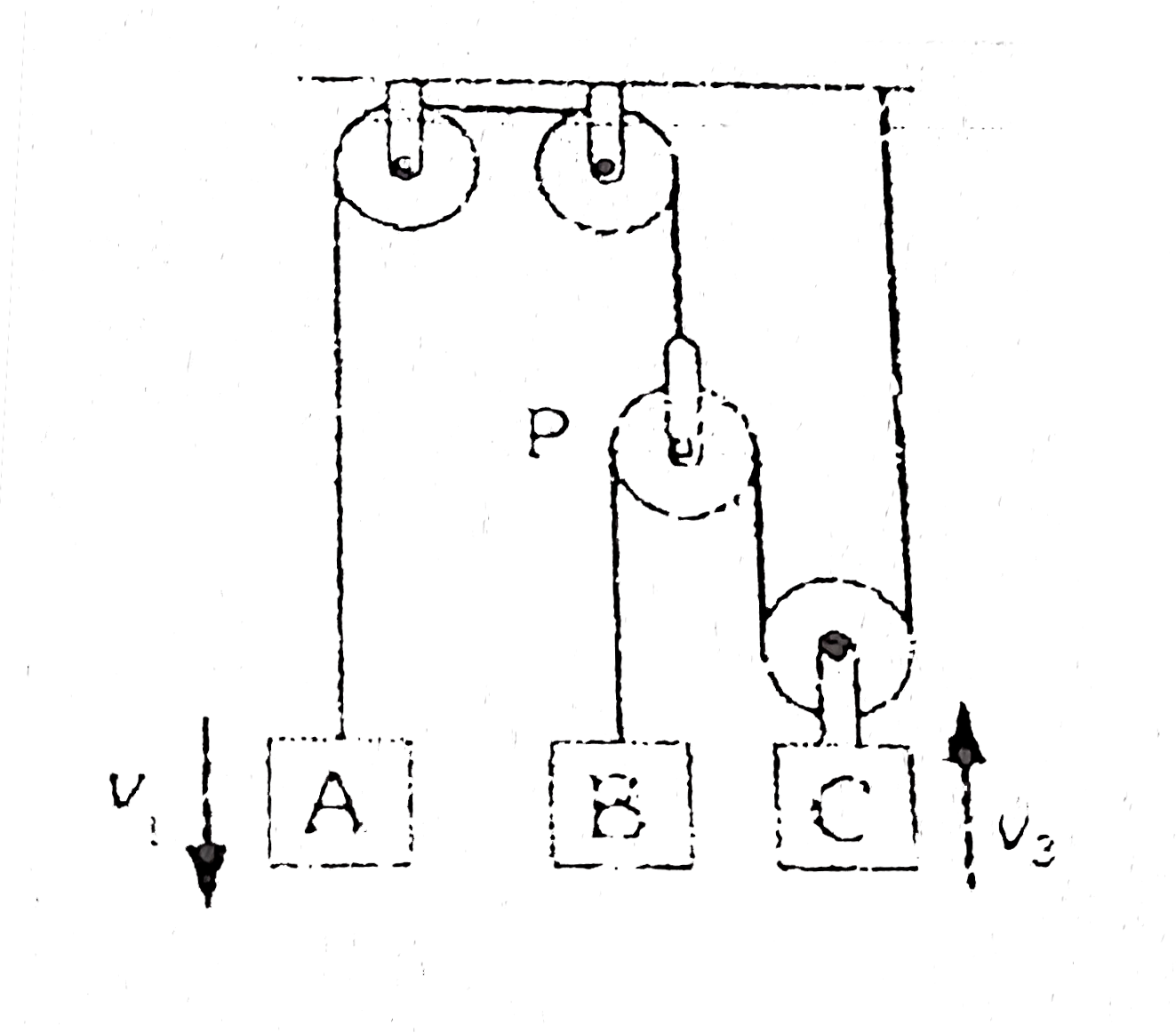
View Solution
A block B is placed over a cart which in turn lies over a smooth horizontal floor. Block A and Block C are connected to block B with light inextensible strings passing over light frictionless pulleys fixed to the cart as shown. Initially the blocks and the cart are at rest. All the three blocks have mass m and the cart has mass M(M=3m). Now a constant horizontal force of magnitude F is applied to block A towards right.
Q. Let the coefficient of friction between block B and cart is μ(μ>0) and friction is absent everywhere else. Then the maximum value of force F applied to block A such that there is no relative acceleration between block B and cart is
View SolutionA long block A is at rest on a smooth horizontal surface. A small block B whose mass is half of mass of A is placed on A at one end and is given an initial velocity u as shown in figure. The coefficient of friction between the blocks is μ.
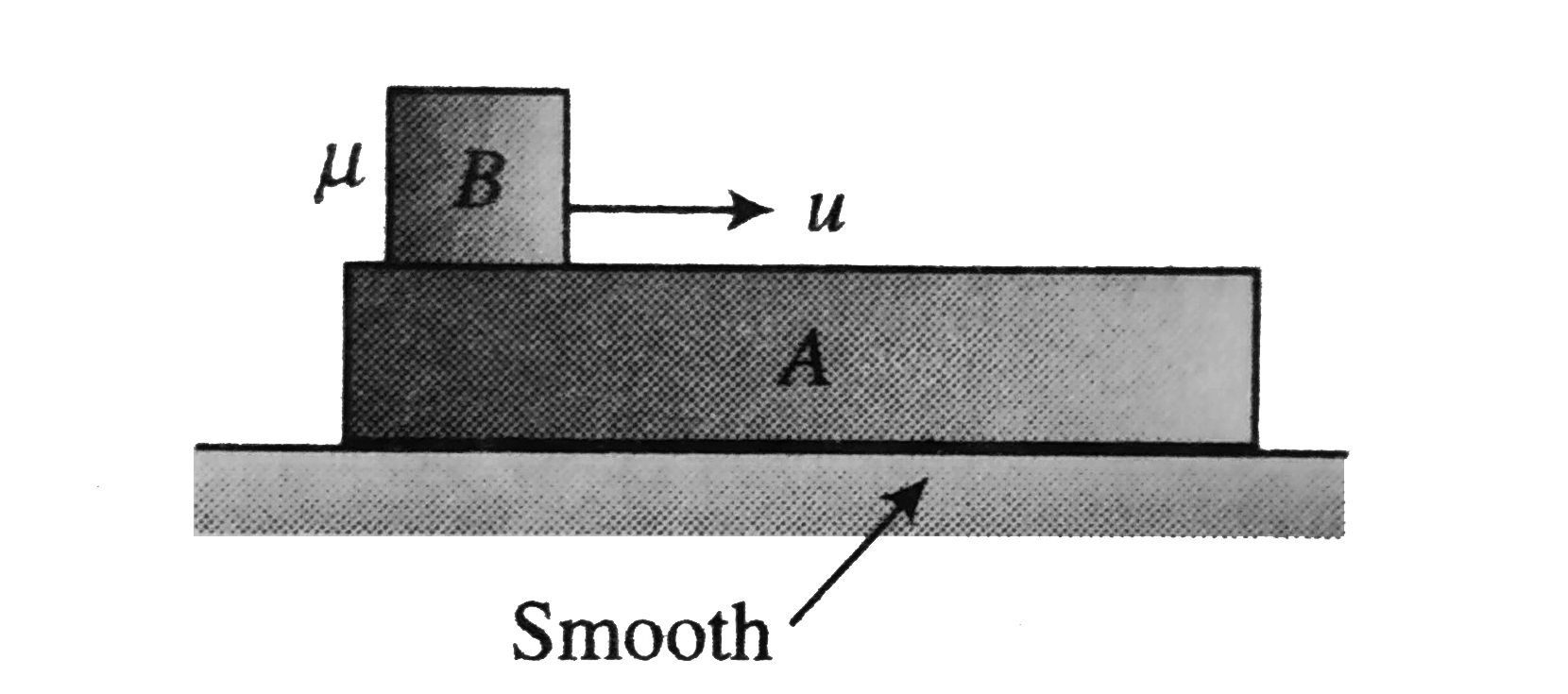
View Solution
A block B is placed over a cart which in turn lies over a smooth horizontal floor. Block A and Block C are connected to block B with light inextensible strings passing over light frictionless pulleys fixed to the cart as shown. Initially the blocks and the cart are at rest. All the three blocks have mass m and the cart has mass M(M=3m). Now a constant horizontal force of magnitude F is applied to block A towards right.
Q. Taking friction to be absent every where the magnitude of tension in the string connecting block B and block C is
View SolutionA block A of mass m is over a plank B of mass 2m. Plank B si placed over a smooth horizontal surface. The coefficient of friction between A and B is 12. Blocks A is given a velocity V0 towards right. Then
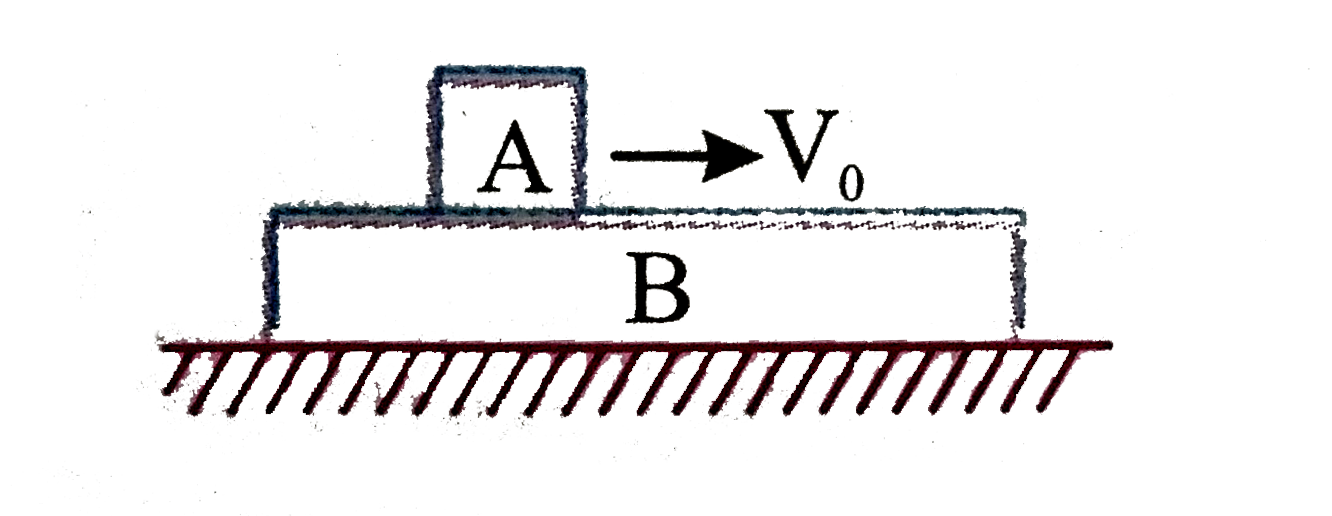
View Solution